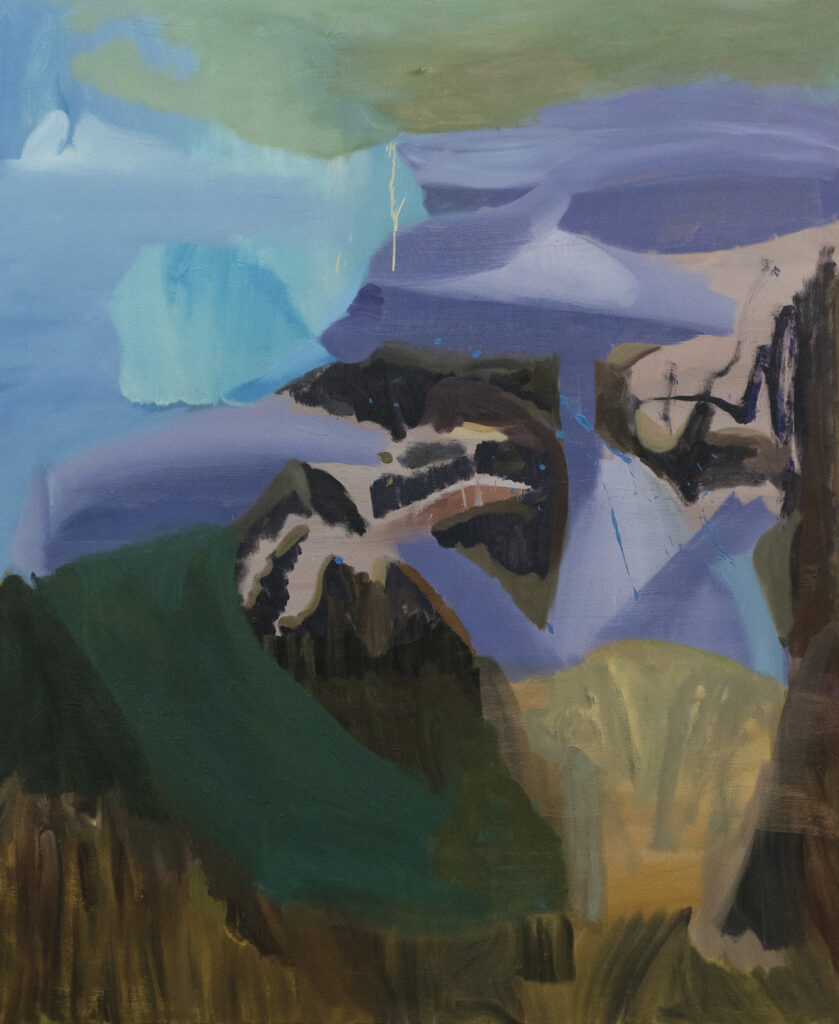
by Cy Schnabel
Milko Pavlov paints places and things we haven’t seen. Environments that can’t be named. He paints the unknown.
For Pavlov, the act of painting does not require thinking. There is no idea or narrative that determine his images. With each work he is approaching an unknown terrain. Seeing is something that develops slowly after thoroughly working on each canvas and letting time pass by. The subject is forming itself somehow.
Pavlov is a Bulgarian abstract painter whose primary approach to painting is through color. “I am a colorist, and color knows everything”. In Pavlov’s paintings form, surface, composition, and subject matter develop as a response to the artist’s colorful palette, which derives from his early exposure to 18th and 19th century Bulgarian icon painters. In the 1970’s, Pavlov shifted his attention towards the icon painters, specifically the Tryavna Iconographic School – where he spent time as a child due to his father’s medical practice – instead of assimilating formal ideas related to the Socialist Realist aesthetic dominant in Bulgaria at the time. Even though representation is not intentional, the way he organizes space in his paintings and the general composition loosely resemble mountains or landscapes; a subconscious gesture that perhaps illustrates the mountainous nature of his native country. At times, the viewer sees an elusive figure blending into its surroundings.
In recent work, what primarily guides and directs Pavlov’s sensibility is his choice of color.
The artist is not interested in talking about subject matter in literal terms; he hopes that the story or any suggestions of what is recognizable in the picture may come through the viewer. Nonetheless, a fusion of different painting genres makes the imagery in his paintings come to life and allows him to invent his own pictorial dimension.
Pavlov’s painterly vocabulary uses 19th century Bulgarian icon painters as an initial inspiration through their approach to color. A point of departure related to his upbringing which, ultimately, the artist rejects by creating a universe stripped of any iconography containing symbols alluding to prescribed meanings. Instead, he paints an invented natural world, or perhaps what one sees when they dig deeper into the earth’s surface. These recent paintings suggest many things–landscape, figuration, abstraction. At times, one might be looking at rock textures or other closeups of the earth, until the forms become immense creating a vast scale within the picture plane. A way of seeing that is everchanging, as if the viewer is witnessing the shifting of tectonic plates. Pavlov’s figurative gestures are always implicit. The figure can take on many shapes and forms: the sky, mountains, stones, a single cliff or cloud. An omnipresent entity. Everywhere and nowhere. Overall, these images are abstract because the picture never defines itself.
When asked about composition in a recent interview between the artist and myself, Pavlov said, “Space is always there, and the space is not always the one we are seeing with our material eyes, the ‘other space’ that is not to perceive, is my approach to the form of space…”
Pavlov is creating a fictional arena just beyond perception, revealing invisible space. An admirable attempt to express the inexpressible.
Many of the artist’s titles have dates way ahead of our time. B.V. 2121 or P.F. 2109, P.F. stands for ‘Picture from’ and B.V. is ‘Bild von’, a translation of the same thing in German. He also adds MPП 2048 or MPП 2051, MPП being the initials of the artist’s name in the Cyrillic alphabet. With these titles, Pavlov is interested in a conceptual dimension that reflects an intersection between different moments in time. Through these references to futuristic times, Pavlov is challenging the life expectancy of everything: himself, the viewer, the painting itself.
Perhaps Milko Pavlov is constructing his particular vision of the future filled with spectacle and fleeting sights. The light’s reflection on a cliff, the remnants of a prehistoric man consumed by the earth, an ethereal giant entering a valley, mountains that look like frozen human forms. The undefined character of these pictures feels like a blurry record of places or the faulty nature of memory that becomes inevitable when time passes.
© RAPPORT Media 2022